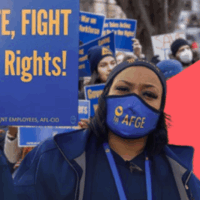The Trump administration issued rules and legal guidance that made it more difficult for unions to organize workers, and for workers to bring complaints and lawsuits against employers for alleged labor-law violations.
That’s changing now that Democrats are in the White House, and Democratic appointees control the Labor Department and National Labor Relations Board. For instance, the NLRB has just proposed a new labor-friendly rule on “joint-employer” status intended to reverse a Trump-era rule that was more friendly to employers.
The NLRB’s new proposed joint-employer rule will make it easier for employees who work for a contractor, staffing or temp agency, or franchise, to drag the big companies higher up the employment chain into labor disputes.
So, imagine a crew of warehouse workers who get a paycheck from a staffing firm, which contracts to provide labor to a big retailer. And actually, the boxes the workers load, the equipment and scheduling software they use — are the big retailer’s, not the staffing company’s.
“This rule would broaden the responsibility to those who have indirect authority to control the working conditions of employees,” said Ruben Garcia, who runs the Workplace Law Program at the University of Nevada-Las Vegas. “And that can be everything from setting production quotas that require certain kinds of labor conditions, or scheduling like in many fast-food franchises which are scheduled from a central location.”
The new proposed rule could make the bigger parent companies a target of union organizing drives. Cathy Ruckelshaus is general counsel at the National Employment Law Project.



